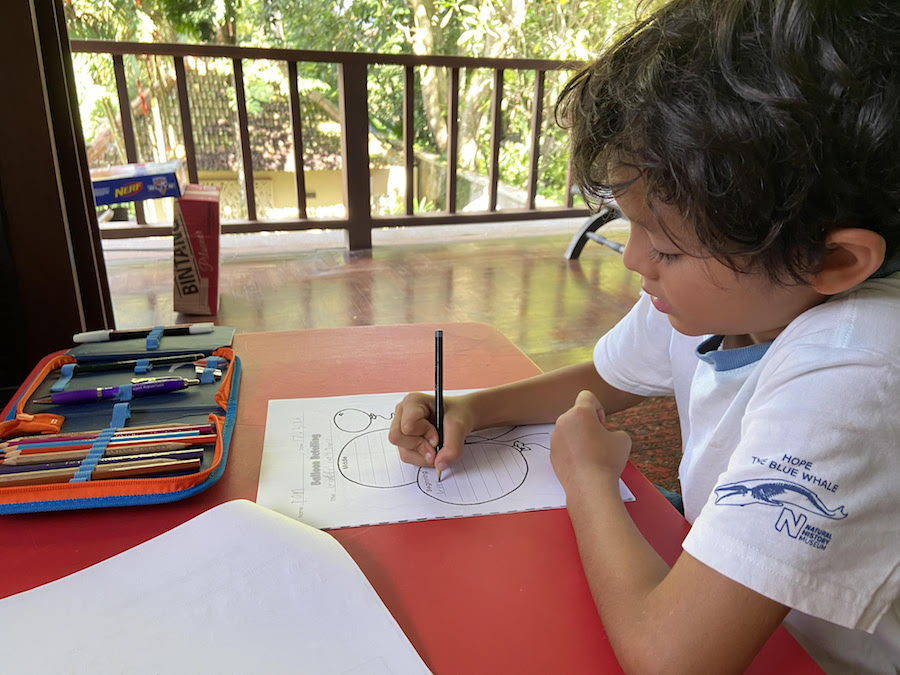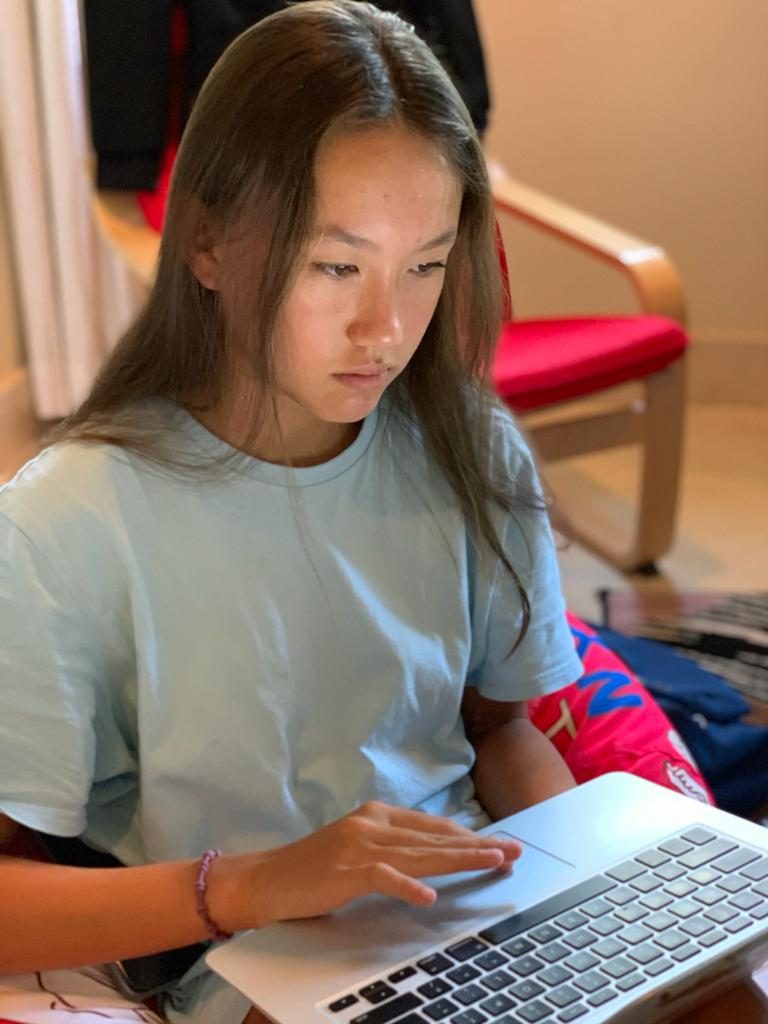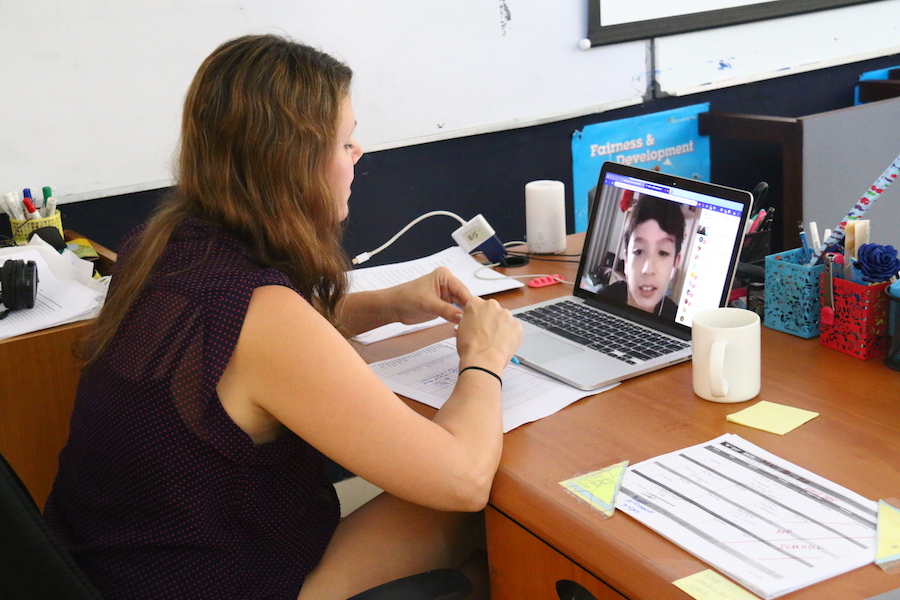When a child hears that “school’s out”, the immediate, knee-jerk reaction is often a jump for joy. “No more work! No more study! Yay!” Whatever it is amongst children, it just seems to be the go-to emotion, that is, until they realise what a life without school really means…
Yes, with the need for social distancing, children have very quickly noticed how enjoyable school really was! To be amongst their friends, engage with favourite teachers, enjoy the facilities freely. None of that is possible now that most of them are confined to their homes.
One aspect that children didn’t know they needed — parents are keenly aware, of course — is constant stimulation. What they may have seen as ‘tedious study’ was keeping their brains whirring and active. So, to provide this in their homes is absolutely key during times of Social Distancing. One school in Bali shares how they’ve adapted their teachings to provide this educational stimulation to their students — no easy feat with so many students.

Bali Island School (BIS) took preventative measures very quickly, moving to ‘Level III’ of their Emergency Response Plan to reduce the risk of Covid-19 of only the children but staff, faculty and parents. In fact, as soon as January the school were already preparing for potential scenarios.
Teachers were given early training on four applications they would use in the case of Online Learning, and actually practiced and ran-through these with their classes when schools remained open. This made sure everyone was ready in the eventuality of school closure.
Then, on 16 March 2020, the Bali Island School began their Online Studying program, or Distance Learning programs. Whilst many schools have closed for safety, a discussion with BIS’ Head of School, Garth Wyncoll, shows the impressive level they have been able to continue provide an engaging learning experience to their students from afar.
Firstly, on their last day of school, Primary school students went home with a fully-kitted out study pack. These included differentiated reading material, maths worksheets, art projects and more. When all of these were finished, parents could come in and swap them out for new study packs.

This was part of the asynchronous learning program, whereby students could work on tasks within a time-period but work on them in their own time. Preferably with the help of their parents, of course.
This type of learning extends to the Secondary school students as well, however most of their work was online-based, implementing applications like See-Saw, Google Docs and Google Classrooms (which they use even when in school) to access work and tasks set by their teachers.
Of course, as one of the most established IB Schools in Bali, BIS continues to provide synchronous learning, whereby tasks are completed together, allowing engagement with other classmates or with their teacher. This is all done online, of course, using Google Meets conferences. They continue to hold ‘Home Room’, where whole classes go online together to talk, ask questions and socialise – with their teachers included. During school office hours, students also have the freedom to call their teachers for a one-on-one video session (all calls are recorded for child protection).
Technology has clearly been a key facilitator in the school’s ability to continually provide education to their students. Two applications which have simulated classroom experiences are ‘Explain Everything’, a whiteboard-simulator allowing teachers to explain with visuals; and Loom, an application that allows teachers to voice record over documents, helping to go through tasks or worksheets etc.

Garth Wyncoll shares that he had been in similar circumstances back in 2014 when working in Lagos, Nigeria, when an Ebola outbreak caused similar learning requirements. However, he explains that since then the online learning experience has been thoroughly enriched and expanded.
What has been great, he explains, is the international education community have been generous too. International schools in countries hit earlier than Indonesia shared a lot of their experiences and take-aways; and education companies gave many of their learning resources out for free.
The teachers are invited to use their own creativity as well, one example had two teachers collaborating on a class through Google Meets, one teacher was explaining “forces” (push and pull etc) to her class, whilst the other demonstrated on a different feed on her bicycle at home.
As many parents around the world struggle to properly stimulate their children’s minds and keep them active – be it lack of resources or scrambling with time – school’s can come in as the bastions of hope. There are many indirect effects of this Covid-19 situation, other than the virus, sickness etc – lives at home have been disrupted and people have had to change the very way they operate on a day-to-day basis. Thus, it’s good to see institutions adjusting and adapting to the circumstances.
If you’re interested to read more about Bali Island School’s online learning protocols, read more in their resource file: https://sites.google.com/baliis.net/distance-learning-at-bis/home






